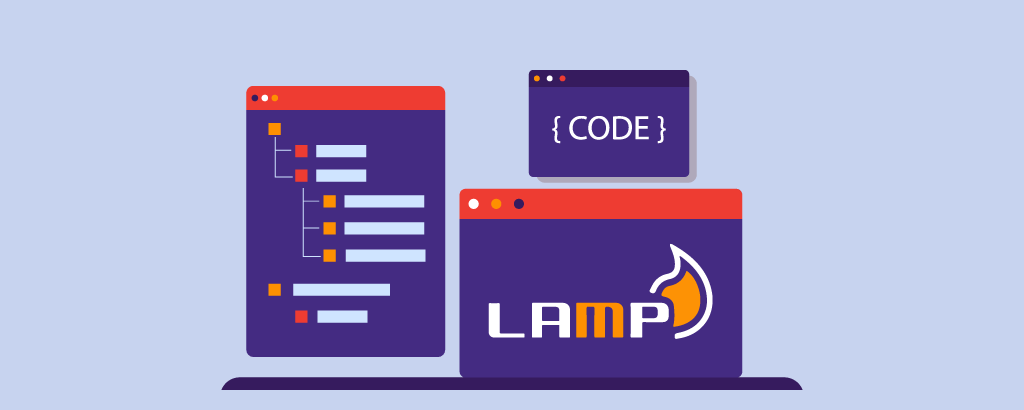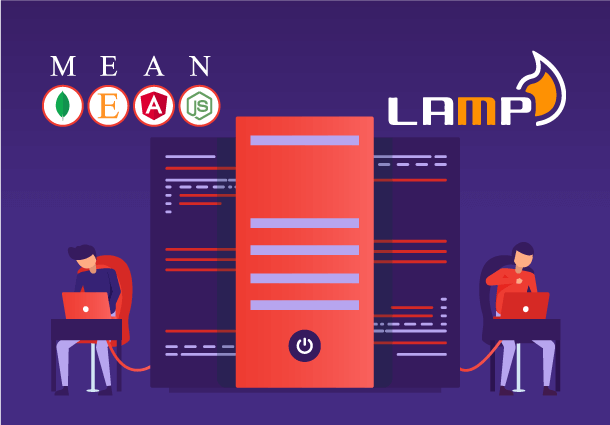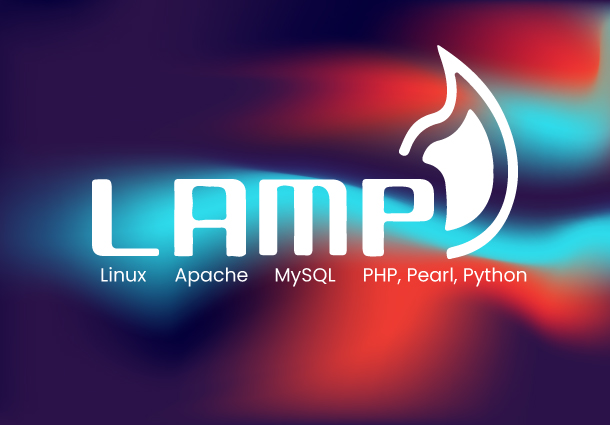LAMP- Behind the Scenes of high-performing web Applications
Looks like your next web project is up and you are in the middle of a daunting task to find the right platform. Ranging from open source to pay, the list of technologies piling up on the market seems almost endless. 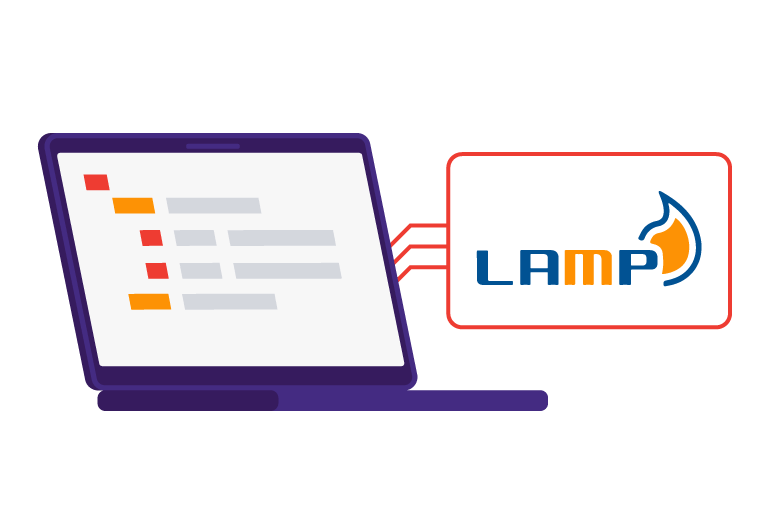 Hang on! It’s not yet time to feel overwhelmed and confused because we introduce you to one of the most popular names, you might as well have come across. It’s a stable, simple, and powerful LAMP. Well, so what is LAMP? Surely, it isn’t a source of lighting but just like the lamp you’d use every day, this platform is one of the web’s original open-source architectures that can be found everywhere. Now, is LAMP alone? No, it’s a collection of software technologies packed together to form a unique platform called “Stack” that supports application software. So, this widespread LAMP Stack took birth in 1998 and was lovingly called LAMP by Michael Kunze for a reason. If a web application were to function seamlessly then it needed to perfectly integrate a web server, an OS, A database, and a programming language. So, that’s LAMP for you – Linux, Apache, My SQL, and PHP. Intrigued? Then let’s figure out more about how these layers perfectly stack together to make LAMP Stack development possible.
Hang on! It’s not yet time to feel overwhelmed and confused because we introduce you to one of the most popular names, you might as well have come across. It’s a stable, simple, and powerful LAMP. Well, so what is LAMP? Surely, it isn’t a source of lighting but just like the lamp you’d use every day, this platform is one of the web’s original open-source architectures that can be found everywhere. Now, is LAMP alone? No, it’s a collection of software technologies packed together to form a unique platform called “Stack” that supports application software. So, this widespread LAMP Stack took birth in 1998 and was lovingly called LAMP by Michael Kunze for a reason. If a web application were to function seamlessly then it needed to perfectly integrate a web server, an OS, A database, and a programming language. So, that’s LAMP for you – Linux, Apache, My SQL, and PHP. Intrigued? Then let’s figure out more about how these layers perfectly stack together to make LAMP Stack development possible.
Unfolding the 4 Layers: Components of LAMP Stack
The constituent components of LAMP stack have unique capabilities and characteristics that make developers turn to it even today, despite other open-source platforms. We’ll look into them one after the other.
Linux
First up in the line is the Linux operating system. It is the one that stands above all as the backbone allowing other components to run over it. If you ask why Linux is the most preferred member of this stack, it’s because Linux over the years has earned a huge user base across industries. And it is also extremely diverse to accommodate Windows, macOS, and others. It is hailed for its flexibility and better configuration in comparison to other operating systems. Also, Linux has pre-designed distributions for desktop interfaces and server backends, among which Debian and Ubuntu and the leading ones.
Apache
A look into Apache’s history takes us back to the mid-’90s. Apache, a mature and feature-rich server, has been the driving force behind a significant portion of the websites that exist on the internet today. It is made free under an open-source license and is an excellent server that’s in sync with processing requests and transmitting information using HTTP. Since it is maintained and supported by a strong community, Apache is indeed the LAMP Stack favorite.
My SQL
My SQL forms the third layer of the LAMP architecture and has earned an acclaimed name as a relational database management system. It stores all the relevant data using the query language SQL which works super easily with structured business domains. If you want to constantly change the content of your website, gather user feedback, and have plenty of user-contributed content that needs to be stored safely and retrieved later, then MySQL is your go-to solution. In fact, it is a titan that has the ease of handling the most complicated websites.
PHP
The role of this programming language is central to the functioning of dynamic web applications. It is PHP that combines all the other elements together so as to function in harmony. PHP makes the best-fit programming language for a LAMP web application because it gels exceptionally well with MySQL. Similarly, it easily pulls data out of the Apache database. And this function is instantly carried out by this smart programming language by integrating PHP code into segments of the web page that has to be dynamic. Moreover, PHP comes in handy for beginners as it works fast and eases the learning curve. But at times, the P in LAMP sees developers swapping out PHP for Perl and Python too. Not a bad choice after all-you get to enjoy almost the same benefits as they are equally simple to work with.
Basking in the Brilliance: Discovering the Business Benefits of LAMP Stack Development
If the task of putting your web application together has ever looked like a massive ocean to cross, then you need to right away pick LAMP stack for its benefits Read on to find out what it keeps under the hood:
Flexibility
Unlike other tech stacks, LAMP gives you the freedom to experiment with a number of developing options. There are no limitations to what you can do technically. At the same time, no licensing restrictions to 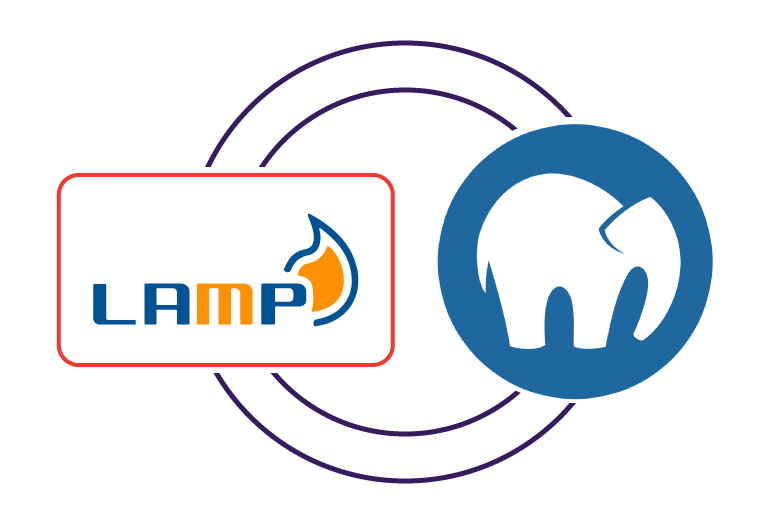 stop you from giving your best. You can pick the right components and tools for the projects that you are working on. For instance, take the case of the OS Linux, now if you feel that it isn’t compatible with your specific needs, you might as well find an alternative OS to work with. In that sense, you can turn your LAMP stack into a MAMP stack using Mac OS, WIMP using Windows and Internet Information Web Server, and WAMP replacing Linux with Windows, These are all non-open source alternatives that you can avail. But, good news! There are open-source alternatives too. LAPP stands for (Linux, Apache, PostgreSQL, PHP), LEMP that is for (Linux, NGINX, MySQL/MariaDB, Perl/PHP/Python), LEAP for (Linux, Eucalyptus, AppScale, Python) and finally the LLMP (Linux, Lighttpd, MySQL/MariaDB, PHP/Perl/Python). LAMP stack development also contributes to highly scalable websites as they have the power to grow according to the demands placed on them.
stop you from giving your best. You can pick the right components and tools for the projects that you are working on. For instance, take the case of the OS Linux, now if you feel that it isn’t compatible with your specific needs, you might as well find an alternative OS to work with. In that sense, you can turn your LAMP stack into a MAMP stack using Mac OS, WIMP using Windows and Internet Information Web Server, and WAMP replacing Linux with Windows, These are all non-open source alternatives that you can avail. But, good news! There are open-source alternatives too. LAPP stands for (Linux, Apache, PostgreSQL, PHP), LEMP that is for (Linux, NGINX, MySQL/MariaDB, Perl/PHP/Python), LEAP for (Linux, Eucalyptus, AppScale, Python) and finally the LLMP (Linux, Lighttpd, MySQL/MariaDB, PHP/Perl/Python). LAMP stack development also contributes to highly scalable websites as they have the power to grow according to the demands placed on them.
Customization
Devs wouldn’t disagree with the opinion that customization is one of the eminent features that any stack should boast of. LAMP being an open forum is blessed with plenty of modules and components with additional functionalities. You are free to edit and interchange the elements with other open-source code to customize it to the user’s needs.
Easy Development and Deployment
Just a few lines of code and there you are ready to take your powerful web apps into the competitive market with LAMP. The deployment process also takes a similar turn. It can be done with the ease of copying the app to a new host due to the absence of licensing issues. After all, then why do you think many hosting services would offer their standard based on LAMP elements?
Enlarge your business dimensions with Pattem’s LAMP web applications
Let the digital life of your business take off with our ambitious LAMP web applications. With a trusted partnership with Pattem Digital Technologies, your business enjoys frontline visibility in a cost-effective manner. As a lamp development company, our strength lies in the core team that strives for seamless project delivery by covering all your unique needs and requirements. Have an excellent business idea in mind? We’ll walk you through it. Reach out to us today!
